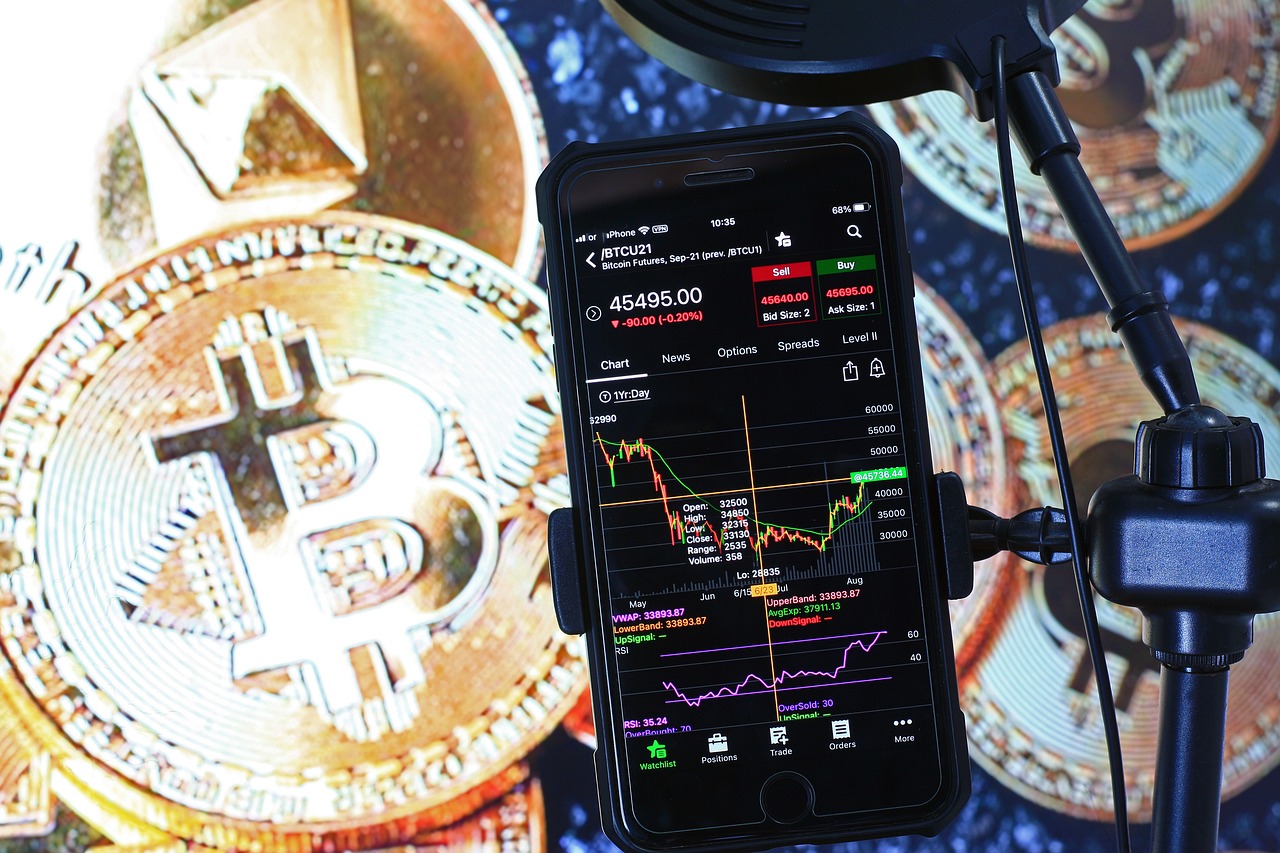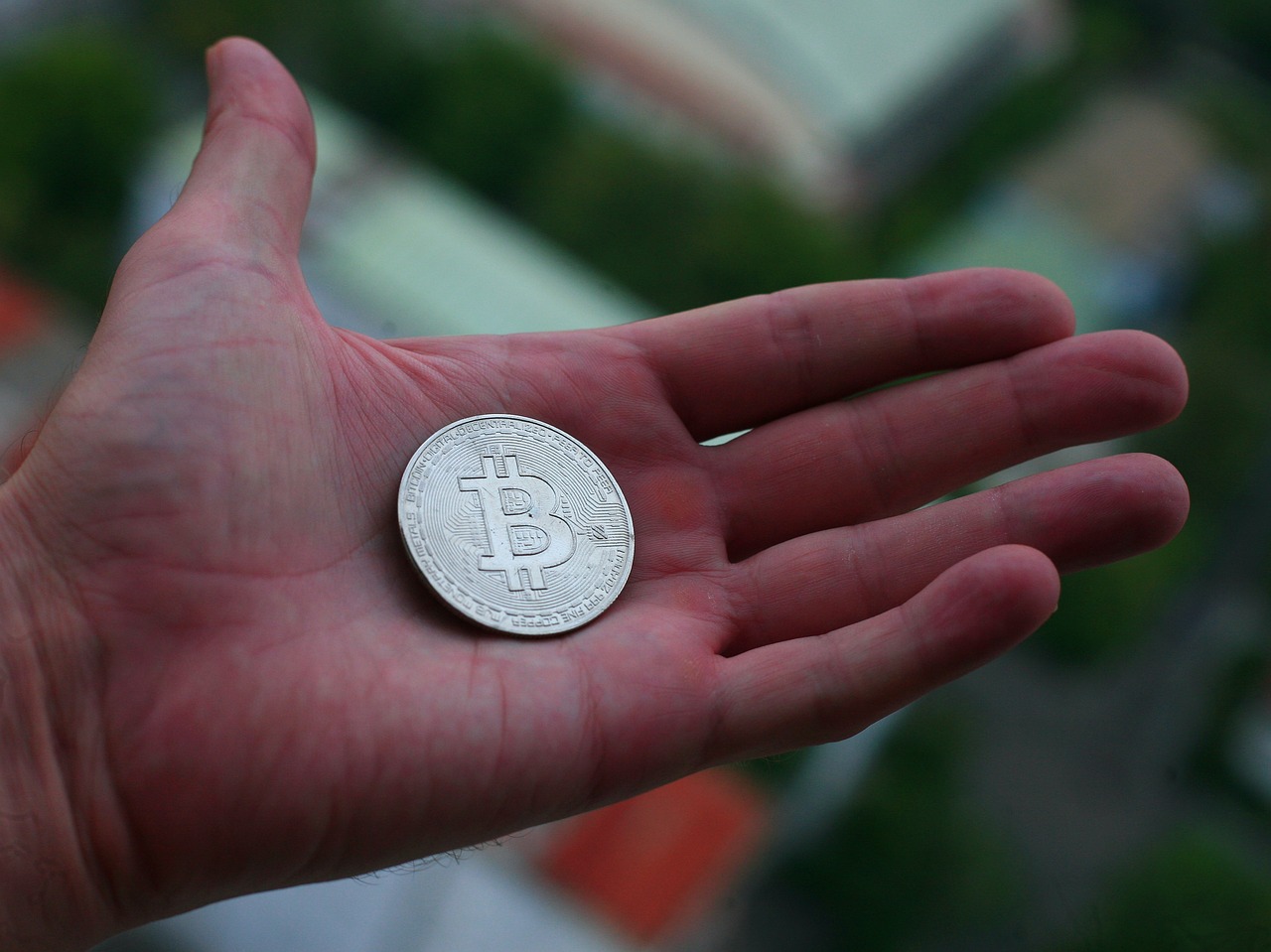Synthetix - Trading Synthetic Assets on the Blockchain
Welcome to the exciting world of Synthetix, a decentralized platform that revolutionizes the way we trade synthetic assets on the blockchain! Imagine being able to trade assets that mimic the value of real-world commodities, currencies, or even stocks, all without the need for traditional intermediaries. Sounds intriguing, right? Well, that’s exactly what Synthetix offers. In this article, we will explore how Synthetix operates, its features, and the incredible benefits it brings to traders looking to navigate the complex waters of decentralized finance (DeFi).
Synthetic assets are essentially blockchain-based financial instruments that replicate the value of real-world assets. Think of them as digital twins of physical commodities or financial instruments. They allow traders to gain exposure to various markets without actually owning the underlying assets. This is significant because it opens up a world of possibilities for traders who want to diversify their portfolios without the hassles of traditional trading.
But how do synthetic assets function? They rely on a network of decentralized protocols and smart contracts to ensure that their value remains aligned with the assets they represent. In the realm of DeFi, synthetic assets play a crucial role by providing liquidity and enabling more efficient trading practices. They are a game-changer for those looking to invest in markets that may be otherwise inaccessible.
Synthetix operates on the Ethereum blockchain, which is known for its robust smart contract capabilities. Users on the platform can create and trade synthetic assets, known as "Synths." So, how does this all work? It starts with a process called collateralization, which we will explore next.
Understanding the collateralization process is essential for anyone looking to use Synthetix. To mint synthetic assets, users must lock up SNX tokens, which serve as collateral. This means that if you want to create a synthetic version of gold, for example, you need to stake a certain amount of SNX tokens. This mechanism not only helps maintain the value of the synthetic assets but also ensures that the system remains stable.
However, locking up SNX tokens comes with its own set of implications. It requires users to have a good understanding of market dynamics and the risks involved. If the value of the collateral falls below a certain threshold, users may face liquidation, which could result in losing their staked assets. Therefore, it's crucial to monitor market conditions closely.
The SNX token is the lifeblood of the Synthetix ecosystem. It serves multiple purposes, including:
- Staking: Users can stake SNX tokens to earn rewards and participate in the network's governance.
- Governance: SNX holders have a say in the future direction of the platform, influencing decisions that could affect the entire ecosystem.
- Incentivizing Liquidity: By staking SNX, users contribute to the liquidity of the platform, making it easier for others to trade synthetic assets.
While collateralization is essential for maintaining stability within the Synthetix platform, it does come with risks. Users need to be aware of potential pitfalls, including:
- Liquidation: If the value of the collateral drops significantly, users risk losing their staked SNX tokens.
- Market Volatility: Rapid price fluctuations can affect the value of synthetic assets, leading to potential losses for traders.
Now that we've covered the basics, let's dive into the trading process on Synthetix. Trading synthetic assets is straightforward. Users can buy, sell, and trade various Synths through an intuitive user interface. The platform offers a range of trading tools to help users make informed decisions.
For instance, traders can access real-time price feeds, charts, and analytics to track the performance of their synthetic assets. This level of transparency is crucial for making strategic trading decisions. Whether you're a seasoned trader or just starting, Synthetix provides the resources you need to succeed.
So, why should you consider trading synthetic assets on Synthetix? The benefits are numerous! First and foremost, synthetic assets offer increased market access. Traders can gain exposure to a broader range of markets, including commodities, currencies, and even stocks that may not be available on traditional exchanges.
With Synthetix, the world of trading opens up like never before. Imagine being able to trade assets from different markets without the need for multiple accounts across various exchanges. This ease of access empowers traders to diversify their portfolios and explore new opportunities.
Additionally, synthetic assets allow traders to utilize leverage and hedging strategies. This means you can amplify your potential returns while minimizing risks. Synthetix makes it easy to implement these strategies, giving traders the tools they need to navigate the complexities of the market.
1. What are synthetic assets?
Synthetic assets are blockchain-based financial instruments that replicate the value of real-world assets, allowing traders to gain exposure to various markets without owning the underlying assets.
2. How does collateralization work in Synthetix?
Users must lock up SNX tokens as collateral to mint synthetic assets. This process helps maintain the value of Synths and ensures stability within the platform.
3. What are the risks associated with trading synthetic assets?
Risks include liquidation of staked SNX tokens if the collateral value drops, as well as market volatility that can impact the value of synthetic assets.
4. Can I trade synthetic assets on my mobile device?
Yes! Synthetix offers a user-friendly interface that is accessible on various devices, including smartphones and tablets.
5. How do I get started with Synthetix?
To get started, you'll need to acquire SNX tokens, create a wallet, and connect to the Synthetix platform. From there, you can begin trading synthetic assets!

Introduction to Synthetic Assets
Welcome to the fascinating world of synthetic assets! These innovative financial instruments are not just a trend; they represent a revolutionary shift in how we perceive and interact with traditional assets. But what exactly are synthetic assets? In simple terms, they are blockchain-based tokens that mimic the value of real-world assets like stocks, commodities, and currencies. Imagine being able to trade a digital version of gold or a share of your favorite tech company without ever having to hold the physical asset. Sounds intriguing, right?
So, why should you care about synthetic assets? Well, they play a pivotal role in the burgeoning realm of decentralized finance (DeFi). By allowing users to trade these assets on a blockchain, platforms like Synthetix are breaking down barriers that have long existed in traditional finance. No longer do you need a broker to buy stocks or a bank to hold your money; everything is done through smart contracts and decentralized applications (dApps).
Synthetic assets are significant for several reasons:
- Accessibility: They provide access to a wide range of assets that may not be readily available in your local market.
- Flexibility: Traders can enter and exit positions without the constraints of traditional trading hours.
- Innovation: They open doors to new trading strategies, including the ability to create assets that track unique indices or even bespoke assets.
In essence, synthetic assets are like the Swiss Army knife of trading; they offer versatility and functionality that can cater to various trading strategies and preferences. As we dive deeper into the mechanics of platforms like Synthetix, you'll discover just how these synthetic assets are created and traded, paving the way for a new era of financial freedom.

How Synthetix Works
Synthetix operates on the Ethereum blockchain, and it’s a game-changer in the world of decentralized finance (DeFi). Imagine being able to trade assets like gold, fiat currencies, or even stocks without ever needing to own the actual asset. That’s the magic of synthetic assets, often referred to as "Synths." These digital representations allow you to gain exposure to various markets without the limitations of traditional trading platforms. But how exactly does this all work? Let’s break it down.
At its core, Synthetix enables users to create and trade these synthetic assets through a process called collateralization. When a user wants to mint a new Synth, they must lock up a certain amount of SNX tokens, which is the native cryptocurrency of the Synthetix platform. This collateral acts as a safety net, ensuring that there is enough value backing the synthetic assets being traded. Think of it like a security deposit when renting an apartment; it protects the landlord (or in this case, the platform) against potential losses.
Understanding the collateralization process is crucial for anyone looking to dive into Synthetix. When users lock up their SNX tokens, they’re essentially providing collateral to mint Synths. The amount of Synths you can create is determined by the value of the SNX you’ve locked up, which is subject to the platform's collateralization ratio. This ratio is typically set at 750%, meaning for every $1 worth of Synths you want to mint, you need to lock up $7.50 worth of SNX. This mechanism ensures that even in volatile market conditions, there is enough collateral to cover the value of the synthetic assets in circulation.
However, it’s essential to keep in mind that if the value of your collateral (SNX) drops significantly, you risk being liquidated. This means that your locked-up SNX could be sold off to pay for the Synths you’ve minted, which can be a harsh reality for traders who don't monitor their positions closely. So, while the potential for profit is enticing, the risks are equally significant.
The SNX token is not just a means to mint Synths; it plays a multifaceted role within the Synthetix ecosystem. Users can stake their SNX tokens to earn rewards, participate in governance decisions, and incentivize liquidity providers. By staking, users contribute to the overall stability of the platform and, in return, receive a portion of the trading fees collected from the platform. This creates a dynamic environment where SNX holders have a vested interest in the success and stability of Synthetix.
While collateralization is essential for the stability of Synthetix, it’s not without its risks. Traders must be aware of the potential pitfalls, including the threat of liquidation if their collateral value falls below the required threshold. Additionally, market volatility can significantly impact the value of both SNX and the Synths being traded. Therefore, it’s crucial for users to maintain a close watch on their collateralization ratio and market conditions.
In summary, Synthetix offers a robust platform for trading synthetic assets, but it requires a thorough understanding of its mechanics and associated risks. As we venture deeper into this fascinating world of DeFi, it’s essential to equip ourselves with the knowledge needed to navigate these waters safely.

Collateralization Mechanism
Understanding the is essential for anyone looking to dive into the world of Synthetix. At its core, collateralization is the process that ensures the stability and integrity of synthetic assets, or Synths, which are traded on the Synthetix platform. When users want to create Synths, they must lock up a certain amount of SNX tokens as collateral. This is akin to putting down a deposit when renting an apartment—it's a way to guarantee that you have skin in the game.
So, how does this process work? When a user locks up their SNX tokens, they are effectively backing the synthetic assets they mint. The value of these tokens must exceed the value of the Synths created to maintain a healthy system. For instance, if you want to mint $100 worth of Synths, you might need to lock up $150 worth of SNX. This over-collateralization helps to absorb any market fluctuations or volatility, ensuring that the system remains robust even in turbulent times.
However, it's important to note that this collateralization isn't just a safety net; it also comes with its own set of rules and implications. Users must maintain a certain collateralization ratio, which is the ratio of the value of the locked SNX to the value of the minted Synths. If the value of the SNX tokens drops significantly, users risk being liquidated. This means that their collateral could be sold off to cover the losses, much like a bank seizing a car if someone fails to make their auto loan payments. Therefore, keeping a close eye on market conditions and adjusting collateral levels accordingly is crucial.
To give you a clearer picture, here’s a simplified representation of how collateralization works in Synthetix:
| Action | SNX Locked (Collateral) | Value of Synths Minted | Collateralization Ratio |
|---|---|---|---|
| Mint Synths | $150 | $100 | 150% |
| Market Fluctuation | $100 | $100 | 100% |
| Liquidation Trigger | $50 | $100 | 50% |
This table illustrates the importance of maintaining a healthy collateralization ratio. As you can see, if the value of SNX drops and the ratio reaches 100%, the risk of liquidation becomes imminent. Thus, understanding and managing your collateral is not just a good practice; it’s a necessity for anyone trading on Synthetix.
In conclusion, the collateralization mechanism in Synthetix is a double-edged sword. While it provides security and stability to the synthetic assets, it also imposes a layer of responsibility on the users. Being aware of how much collateral you have locked up and how it correlates with the value of your Synths can make all the difference between a successful trading experience and a regrettable liquidation.
- What happens if my collateral value drops? If your collateral value drops significantly, you may face liquidation, meaning your locked SNX could be sold off to cover losses.
- How do I calculate my collateralization ratio? The collateralization ratio is calculated by dividing the value of your locked SNX by the value of the Synths you have minted.
- Can I withdraw my SNX tokens at any time? You can withdraw your SNX tokens once you have paid back or burned the corresponding Synths you have minted.

SNX Token Utility
The SNX token is the lifeblood of the Synthetix ecosystem, serving multiple critical functions that enhance the platform's overall efficiency and security. First and foremost, SNX is used for staking, which is a process that allows users to lock up their tokens in order to mint synthetic assets, known as Synths. This staking mechanism not only helps in collateralizing the synthetic assets but also plays a pivotal role in maintaining the stability and integrity of the entire system. When users stake their SNX tokens, they are essentially providing a security buffer that protects against potential losses incurred during trading activities.
Moreover, the SNX token is integral to the governance of the Synthetix platform. Token holders have the ability to participate in decision-making processes, influencing the future direction of the protocol. This decentralized governance model ensures that the community has a say in key issues, such as protocol upgrades and changes in fee structures. By holding SNX, users can vote on proposals that directly impact their trading experience and the overall health of the ecosystem.
In addition to staking and governance, SNX tokens are also utilized for incentivizing liquidity providers. When users provide liquidity to the Synthetix platform, they are rewarded with SNX tokens. This incentivization not only encourages more users to contribute liquidity but also enhances the trading experience by ensuring that there are ample assets available for trading. As a result, liquidity providers play a crucial role in the Synthetix ecosystem, and the SNX token serves as a key motivator for their participation.
To summarize, the utility of the SNX token can be categorized as follows:
| Utility | Description |
|---|---|
| Staking | Locks SNX tokens to mint synthetic assets and provide collateral. |
| Governance | Allows token holders to vote on key platform decisions. |
| Liquidity Incentives | Rewards users for providing liquidity to the platform. |
In conclusion, the SNX token is not just a currency; it is a multifaceted tool that empowers users and strengthens the Synthetix platform. By participating in staking, governance, and liquidity provision, SNX holders play an essential role in the vibrant ecosystem of synthetic asset trading. So, whether you're a trader, a liquidity provider, or a governance enthusiast, understanding the utility of SNX is vital for making the most of your experience on Synthetix.
- What is the primary function of the SNX token? The SNX token is used for staking, governance, and incentivizing liquidity providers within the Synthetix ecosystem.
- How does staking SNX benefit users? Staking SNX allows users to mint synthetic assets and provides a security buffer for the platform, enhancing its stability.
- Can SNX token holders influence platform decisions? Yes, SNX token holders can participate in governance and vote on proposals that affect the Synthetix platform.
- What rewards do liquidity providers receive? Liquidity providers are incentivized with SNX tokens for contributing to the platform's liquidity.

Risks of Collateralization
While the collateralization mechanism is a cornerstone of the Synthetix platform, it is essential for users to understand the inherent risks that come with it. When you lock up your SNX tokens to mint synthetic assets, you are essentially betting that the value of those assets will remain stable or increase. However, the volatile nature of the cryptocurrency market can lead to significant risks, which we will explore in detail.
One of the primary risks is liquidation. If the value of the synthetic assets you have minted falls below a certain threshold, your collateral can be liquidated to cover the losses. This means that you could lose a significant portion, if not all, of your locked SNX tokens. Imagine you're holding your breath underwater, and the pressure builds up—if you can't hold on any longer, you'll be forced to come up for air, and in this case, that air is your collateral being sold off.
Furthermore, market volatility can also impact your investments. The prices of synthetic assets can swing wildly due to external factors, such as market sentiment, regulatory news, or macroeconomic changes. This unpredictability can lead to a scenario where your collateral becomes insufficient to back the synthetic assets you hold, resulting in forced liquidation. It's like riding a roller coaster—thrilling but filled with unexpected drops and turns that can leave you feeling dizzy and uncertain.
To illustrate the potential risks, consider the following table that highlights key factors affecting collateralization:
| Risk Factor | Description |
|---|---|
| Liquidation Risk | Loss of collateral if the value of minted assets falls below a certain level. |
| Market Volatility | Rapid price changes can affect the value of synthetic assets and collateral. |
| Regulatory Changes | New regulations could impact the usability and legality of synthetic assets. |
Lastly, the liquidity of the market plays a crucial role in the collateralization process. If the synthetic assets you are trading lack sufficient liquidity, it may become challenging to execute trades at favorable prices, potentially leading to further losses. In essence, the more you dive into the world of synthetic assets, the more you need to be aware of the currents that can sweep you away. Therefore, it's vital to stay informed and prepared for the unexpected as you navigate this exciting yet risky landscape.
- What happens if my collateral is liquidated? If your collateral is liquidated, it means that your locked SNX tokens will be sold off to cover the losses incurred from the synthetic assets you've minted, potentially resulting in significant financial loss.
- How can I minimize the risks associated with collateralization? To minimize risks, consider diversifying your investments, keeping an eye on market trends, and ensuring that you maintain a sufficient collateral ratio to avoid liquidation.
- Is there a way to recover from liquidation? Once your collateral has been liquidated, recovering those funds can be challenging. You would need to re-invest and re-collateralize to mint new synthetic assets.

Trading on Synthetix
Trading on Synthetix is an exhilarating experience, akin to navigating a bustling marketplace where opportunities abound at every corner. As a decentralized platform, Synthetix allows users to buy, sell, and trade synthetic assets seamlessly. But how does this all work? Let's dive into the mechanics of trading on Synthetix and discover the tools at your disposal.
First off, you'll need to create an account and connect your Ethereum wallet. This is your gateway to the Synthetix ecosystem, enabling you to interact with the platform. Once you're set up, you can start exploring a plethora of synthetic assets, or "Synths," each designed to mirror the value of real-world assets like currencies, commodities, and stocks. Imagine having the ability to trade gold or Tesla shares without ever needing to own the physical asset—this is the magic of synthetic trading!
The user interface on Synthetix is designed with simplicity in mind, making it accessible even for those new to the world of decentralized finance. You’ll find a dashboard that displays real-time prices, trading volumes, and other vital statistics that can help inform your trading decisions. The trading process itself is straightforward: select the asset you want to trade, specify the amount, and execute your order. However, it's essential to be aware of the underlying mechanics that make this all possible.
One of the standout features of Synthetix is its market-making mechanism, which allows users to trade synthetic assets without relying on traditional order books. Instead, trades are executed against a pooled liquidity model, ensuring that there’s always a market for the assets you wish to trade. This innovative approach not only enhances liquidity but also minimizes slippage, allowing for a smoother trading experience.
Additionally, Synthetix offers various trading tools that can help you make informed decisions. For instance, you can access charts and analytics that provide insights into price movements, trading volumes, and historical performance. These tools are invaluable for developing your trading strategies, whether you're looking to capitalize on short-term price fluctuations or invest for the long haul.
However, trading on Synthetix is not without its challenges. The decentralized nature of the platform means that users are responsible for their own security. Always ensure that you’re using secure wallet practices and be cautious of phishing attempts. Moreover, the volatility of synthetic assets can lead to significant price swings, so it's crucial to manage your risk effectively.
In summary, trading on Synthetix opens up a world of possibilities for those willing to embrace the decentralized finance revolution. With its user-friendly interface, innovative trading mechanisms, and a wealth of trading tools, Synthetix empowers traders to navigate the synthetic asset landscape with confidence. Just remember, like any marketplace, the key to success lies in knowledge, strategy, and a bit of caution.
- What are synthetic assets? Synthetic assets are blockchain-based financial instruments that replicate the value of real-world assets, allowing for trading without the need to own the underlying asset.
- How do I trade on Synthetix? To trade on Synthetix, you need to create an account, connect your Ethereum wallet, and select the synthetic asset you wish to trade.
- What is the SNX token? The SNX token is the native cryptocurrency of the Synthetix platform, used for staking, governance, and incentivizing liquidity providers.
- Are there risks associated with trading on Synthetix? Yes, there are risks, including market volatility and the potential for liquidation if the collateralization requirements are not met.

Benefits of Trading Synthetic Assets
When it comes to modern trading, synthetic assets have emerged as a game-changer, providing unique opportunities for traders around the globe. Imagine being able to trade assets that mirror the value of real-world commodities, currencies, or even stocks, all without the limitations of traditional financial markets. This is precisely what synthetic assets bring to the table, offering a plethora of benefits that can enhance your trading experience.
One of the standout advantages of trading synthetic assets is the **increased market accessibility** they provide. Unlike traditional exchanges that may restrict access to certain assets based on geographical locations or regulatory issues, synthetic assets allow traders to tap into a global market. For instance, you can trade synthetic versions of stocks from major exchanges, commodities like gold or oil, and even cryptocurrencies, all from the comfort of your home. This opens up a world of possibilities for traders who are looking to diversify their portfolios without the hassle of navigating complex regulations.
Moreover, synthetic assets offer **leverage opportunities** that can amplify your trading potential. In traditional markets, leverage can be a double-edged sword, increasing both potential gains and risks. However, with synthetic assets on platforms like Synthetix, traders can utilize leverage to enhance their positions while managing risk through strategic hedging. For example, if you believe a particular asset will rise, you can leverage your position to maximize potential profits, while simultaneously hedging against potential downturns. This flexibility is a significant advantage for savvy traders looking to optimize their strategies.
Another remarkable benefit is the **24/7 trading availability**. Unlike conventional stock markets that operate during specific hours, synthetic assets can be traded around the clock. This means that whether you’re an early bird or a night owl, you can execute trades at any time that suits you. This flexibility can be particularly beneficial for those who have other commitments during the day, allowing them to seize market opportunities whenever they arise.
In addition to these benefits, synthetic assets also promote **transparency and security**. Built on blockchain technology, all transactions are recorded on a public ledger, ensuring that trades are secure and verifiable. This transparency reduces the risk of fraud and manipulation, which can be prevalent in traditional financial markets. Furthermore, since synthetic assets are decentralized, they are less susceptible to the whims of centralized authorities or market makers, providing a fairer trading environment for everyone involved.
However, it's essential to approach synthetic asset trading with caution. While the benefits are significant, potential risks must also be considered. Market volatility can impact synthetic assets, just as it does with traditional assets. Traders should be well-informed and prepared to manage their investments wisely. Understanding the intricacies of the Synthetix platform, including its mechanisms for collateralization and liquidation risks, is crucial for anyone looking to dive into this innovative trading space.
In summary, trading synthetic assets through platforms like Synthetix offers a wealth of opportunities for traders. From increased market access and leverage options to the advantages of 24/7 trading and enhanced security, synthetic assets are reshaping the way we think about trading. As with any investment, thorough research and understanding are vital to navigating this exciting new frontier.
- What are synthetic assets? Synthetic assets are blockchain-based financial instruments that mimic the value of real-world assets, allowing traders to gain exposure to a variety of markets.
- How do I trade synthetic assets on Synthetix? To trade synthetic assets on Synthetix, you need to create an account, deposit SNX tokens as collateral, and then you can mint and trade various synthetic assets.
- What are the risks associated with trading synthetic assets? The primary risks include market volatility, potential liquidation of collateral, and the complexity of managing leveraged positions.
- Can I trade synthetic assets at any time? Yes, synthetic assets can be traded 24/7, providing flexibility for traders around the world.

Market Accessibility
When it comes to trading, one of the biggest barriers that many investors face is access to different markets. Traditional exchanges often limit the assets you can trade, leaving you at the mercy of what’s available in your region or on that specific platform. This is where Synthetix shines brightly in the world of decentralized finance (DeFi). By allowing users to create and trade synthetic assets, Synthetix opens the door to a universe of financial opportunities that were previously out of reach for many traders.
Imagine being able to trade assets like gold, oil, or even a stock index without needing to own the underlying asset itself. With synthetic assets, this is not just a dream; it’s a reality. Synthetix allows you to trade these assets directly on the blockchain, which means you can access them from anywhere in the world, as long as you have an internet connection. This democratization of trading is one of the most exciting features of the platform.
But how does Synthetix achieve this level of accessibility? The platform creates synthetic assets, or Synths, that mirror the value of real-world assets. This is done through a process known as collateralization, where users lock up SNX tokens to mint these synthetic assets. Because of this mechanism, traders can gain exposure to various markets without the need for traditional brokerage accounts or the limitations that come with them.
Furthermore, Synthetix supports a wide array of assets, including cryptocurrencies, fiat currencies, commodities, and indices. Here’s a quick look at some of the asset classes you can trade:
| Asset Class | Examples |
|---|---|
| Cryptocurrencies | Bitcoin, Ethereum, etc. |
| Fiat Currencies | USD, EUR, etc. |
| Commodities | Gold, Silver, Oil, etc. |
| Indices | S&P 500, NASDAQ, etc. |
This wide variety of assets not only enhances market accessibility but also empowers traders to diversify their portfolios. In traditional markets, diversifying often means dealing with multiple platforms and navigating through various regulations. However, with Synthetix, you can manage your entire trading strategy in one place, which is a huge advantage for both novice and experienced traders.
Moreover, the ability to trade synthetic assets means that you can capitalize on market movements without needing to own the actual asset. For example, if you believe that the price of oil is going to rise, you can buy a synthetic asset that represents oil. This not only saves you the hassle of dealing with physical commodities but also allows you to trade around the clock, as the blockchain operates 24/7.
In summary, Synthetix has revolutionized market accessibility in the trading landscape. By providing a platform where synthetic assets can be traded freely and efficiently, it empowers users to take control of their financial future. Whether you’re looking to hedge against market volatility, speculate on price movements, or simply explore new investment opportunities, Synthetix makes it all possible in a way that traditional exchanges simply cannot.
- What are synthetic assets? Synthetic assets are blockchain-based financial instruments that replicate the value of real-world assets, allowing users to trade them without owning the underlying asset.
- How does collateralization work on Synthetix? Users must lock up SNX tokens to mint synthetic assets, which serves as collateral to ensure the stability and value of the Synths.
- What types of assets can I trade on Synthetix? You can trade a variety of assets, including cryptocurrencies, fiat currencies, commodities, and indices.
- Is trading on Synthetix safe? While there are risks involved, such as market volatility and liquidation, Synthetix employs mechanisms to help mitigate these risks.

Leverage and Hedging Opportunities
When it comes to trading, the ability to leverage your investments can be a game changer. With Synthetix, traders can access leverage that allows them to amplify their potential returns. But how does this work exactly? Essentially, traders can borrow against their synthetic assets, enabling them to control larger positions than they could with their initial capital alone. Think of it like using a magnifying glass to see the details of a beautiful painting—leverage lets you zoom in on opportunities that would otherwise be out of reach.
Moreover, Synthetix provides robust hedging opportunities for traders looking to protect their investments. Hedging is like taking out insurance on your car; it’s a way to mitigate risks associated with market fluctuations. By using synthetic assets, traders can create positions that offset potential losses in their primary investments. For instance, if you hold a significant amount of a cryptocurrency and fear a price drop, you can short a synthetic version of that asset on Synthetix to hedge against your losses.
To illustrate this, consider the following scenario:
| Asset | Current Price | Position Type | Hedge Strategy |
|---|---|---|---|
| Bitcoin | $30,000 | Long | Short Synthetic Bitcoin |
| Ethereum | $2,000 | Long | Short Synthetic Ethereum |
In this table, you can see how a trader holding long positions in Bitcoin and Ethereum could short synthetic versions of these assets as a hedging strategy. If the market takes a downturn, the gains from the short position can offset losses from the long positions, providing a safety net.
However, while leveraging and hedging can significantly enhance your trading strategy, it's crucial to understand the associated risks. The more leverage you use, the higher your potential for losses. Just like a double-edged sword, leverage can cut both ways. Therefore, it's essential to approach these strategies with caution and a clear understanding of your risk tolerance.
In conclusion, Synthetix opens up a world of possibilities for traders looking to utilize leverage and hedge their investments. By understanding these opportunities and applying them wisely, you can navigate the complex waters of trading with more confidence and potentially greater rewards.
- What are synthetic assets? Synthetic assets are blockchain-based financial instruments that replicate the value of real-world assets.
- How does leverage work in Synthetix? Leverage allows traders to borrow against their synthetic assets, enabling them to control larger positions than their initial capital.
- What is the purpose of hedging? Hedging is a risk management strategy used to offset potential losses in investments by taking an opposite position in a related asset.
- Are there risks associated with trading synthetic assets? Yes, trading synthetic assets involves risks such as market volatility and the potential for liquidation if collateral requirements are not met.
Frequently Asked Questions
- What are synthetic assets?
Synthetic assets are blockchain-based financial instruments designed to replicate the value of real-world assets. They provide traders with the ability to gain exposure to various markets without actually owning the underlying assets.
- How does Synthetix work?
Synthetix operates on the Ethereum blockchain, allowing users to create and trade synthetic assets known as Synths. Users must lock up SNX tokens as collateral to mint these assets, which ensures stability and liquidity within the platform.
- What is the role of the SNX token?
The SNX token serves multiple purposes in the Synthetix ecosystem. It is used for staking, governance, and incentivizing liquidity providers, making it a vital component for users looking to participate actively in the platform.
- What are the risks associated with collateralization?
While collateralization is essential for maintaining the stability of synthetic assets, it comes with risks. Users may face liquidation if the value of their collateral falls below a certain threshold, and market volatility can significantly impact their investments.
- How can I trade synthetic assets on Synthetix?
Trading synthetic assets on Synthetix is straightforward. Users can buy, sell, and trade Synths through the platform's user-friendly interface, which offers various trading tools to enhance the trading experience.
- What are the benefits of trading synthetic assets?
Synthetic assets offer several advantages, including increased market access and the ability to trade a diverse range of assets. They also provide opportunities for leverage and hedging strategies, allowing traders to optimize their investment approaches.
- Can I trade assets that are not available on traditional exchanges?
Absolutely! One of the key benefits of synthetic assets is that they enable traders to access a broader range of markets, including assets that may not be listed on traditional exchanges, thereby enhancing trading opportunities.
- What leverage options are available on Synthetix?
Synthetix allows traders to utilize leverage, meaning they can control larger positions with a smaller amount of capital. This can amplify potential profits, but it also increases the risk of losses, so traders should proceed with caution.



















